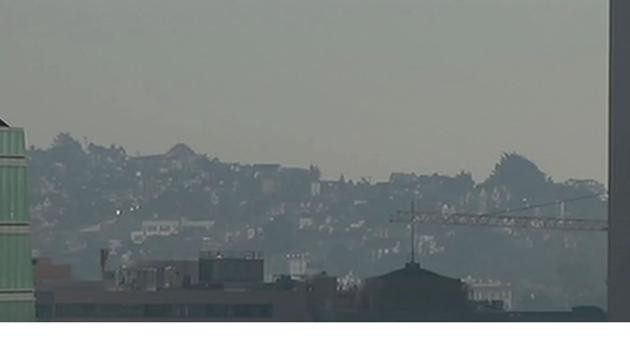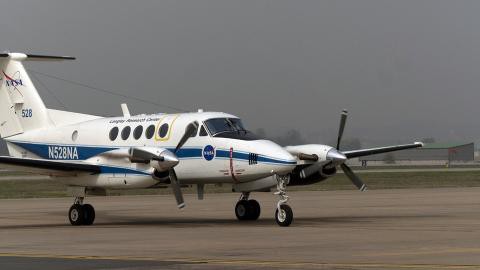The AQ part of the science mission stands for air quality. If you have ever had a smog test for your vehicle or experienced a spare the air day, you have first hand experience of air quality and what impacts it.

A Spare the Air Day in the San Francisco Bay area in winter 2015. Image provided by http://abc7news.com/weather/poor-air-quality-blankets-bay-area-for-fifth-consecutive-day/464558/
The largest contributors to bad air quality are emissions from human activity, which ranges from driving a car, mowing your lawn, barbecuing, using a fireplace, or running a factory, and weather. Any time there are minimal or no winds, the emissions from these human activities will stay in one place and start accumulating until the air quality becomes bad for humans, plants, and the environment.
The KORUS portion of the name refers to this science mission having a large collaboration among scientists from South Korea and the United States.

The logo for the mission. Image provided by https://espo.nasa.gov/home/korus-aq/image/KORUS-AQ_Logo_and_Banner_-_latest
The science mission was selected to occur over South Korea for numerous reasons. One of the main reasons is for satellite validation. NASA and other space agencies have launched numerous satellites into space to monitor air quality. To ensure us scientists understand the data from these satellites, NASA also conducts airborne science missions (like this one) that samples the air quality and emissions at different locations and at different altitudes. The measurements taken on the airplanes provide a way to verify and improve our understanding of the satellite data. There will be a new satellite that will be monitoring the air quality over South Korea and Japan that we are collecting the data for this analysis. Also, these measurements will be valuable for future missions to compare against a similar new satellite that will be monitoring air quality over the United States.

The geostationary satellite that will be monitoring air quality over South Korea. It was built in the United States by Ball Aerospace. Image provided by http://www.ball.com/aerospace/programs/gems.
Another reason is to provide scientists an ability to better improve our understanding of the processes the lead the emissions to become bad air quality. South Korea provides an excellent location for such analysis. Since the country is a peninsula, the local human emissions from South Korea are well separated from the other emissions of eastern Asia. This provides an unique opportunity to investigate the emissions and chemistry at a local scale and how it impacts air quality. Also, the peninsula provides an awesome opportunity to look at how air masses impacted by other regions of eastern Asia transport into the South Korean peninsula and impacts the local air quality. For that aspect, there are numerous ground sites around the peninsula, 3 airplanes, and 2 boats that will be measuring different aspects of air quality.

The NASA B-200. One of the three airplanes that will be flying during KORUS-AQ. Image provided by https://espo.nasa.gov/home/korus-aq/mission-gallery

The NASA DC-8, which is the airplane I will be flying on during the mission. Image provided by https://espo.nasa.gov/home/korus-aq/mission-gallery.

85 comments on “What is KORUS-AQ?”
Comments are closed.